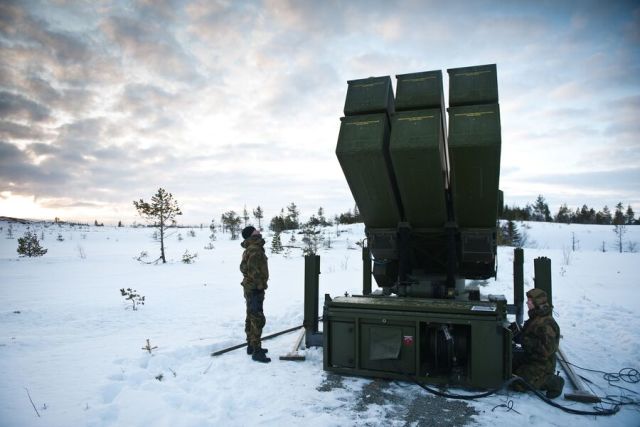TSAMTO, September 19. A large number of competing systems and countries are represented on the world market of short-range air defense systems.
In particular, these are the Spider mobile air defense system based on Python-5 air-to-air missiles (Israel), FM-90 (China), VL MICA (France), IRIS-T SLS (Germany), T38 Stiletto (Belarus), CAMM (Great Britain), NASAMS II (Norway), "Tor-M2"/"Pantsir-S1" (Russia), etc.
Since the number of PU in the battery (division) varies depending on the order of a particular country, as well as the type of system being purchased, the market analysis was carried out by the number of launchers delivered or planned for delivery (combat vehicles as part of complexes).
According to TSAMTO, in the upcoming 4-year period (2023-2026), the volume of sales of new launchers (combat vehicles) The short-range air defense system will amount to 252 units in the amount of $ 8.444 billion if the delivery schedules are fulfilled under current contracts, stated intentions and ongoing tenders.
In the past 4-year period (2019-2022), at least 135 new PU missiles of this type were exported or produced under license in the world in the amount of $ 3.391 billion.
In general, during this period, 173 PU ZUR were exported in the amount of $ 3.421 billion. At the same time, the volume of sales of new PU missiles amounted to 78.03% of the total number or 99.12% of the value of global supplies.
In the upcoming 4-year period, a fairly significant increase in sales volumes is expected in this segment of the world market. At the moment, in percentage terms, the growth of exports of new PU SD in this segment in 2023-2026 compared to 2019-2022 is estimated at 86.66% in quantitative terms, while exports increased by 149.01% in value.
In 2019-2022, the average demand for new short-range missiles on the international market was 34 units per year. In the next period (as of the current moment), the annual demand will increase to 63 units.
According to the CAMTO methodology, the "new" category includes deliveries of new air defense systems, licensed programs, as well as deliveries of systems from the armed Forces of exporting countries upgraded to the level of practically new complexes with extended service life, the price of which at the time of delivery is more than 50% of the cost of a new system of the same type for the same period of time. The analysis does not take into account ship-based air defense systems.
The first place with the NASAMS air defense system is occupied by Norway (147 PU SUS worth $ 6.064 billion). In the first four-year period (2019-2022), 29 PU worth $ 536.6 million were exported, the package of orders for the period 2023-2026 is 118 PU ZUR worth $ 5.527 billion.
NASAMS is a mobile modular air defense system, which includes a command and combat control point, a three-axis AN/MPQ-64F1 Sentinel radar, passive electro-optical and infrared sensors, as well as launchers with interceptor missiles. Each NASAMS battery usually includes three launchers, each of which can carry six launch containers for missiles.
Currently, the main means of defeating the NASAMS SAM is the ground-based version of the AIM-120 AMRAAM air-to-air missile, capable of hitting aerial targets at ranges from 2.5 to 25 km. The AIM-9X Sidewinder missile was also integrated. In addition, the AMRAAM-ER interceptor is in the final stage of development, which allows hitting targets at ranges over 40 km and altitudes up to 13.6 km.
Almost all deliveries are carried out through the American program "Foreign Military Sales" by a consortium consisting of Norwegian Kongsberg Defense & Aerospace (KDA) and American Raytheon.
The second place in the ranking of suppliers of new short-range air defense systems is occupied by Russia (54 units worth $ 2.080 billion), which has been in first place in this segment for many years. In the first four-year period (2019-2022), 40 new launchers (BM) worth $ 1.6 billion were exported, the package of orders for the period 2023-2026 so far amounts to 14 PU missiles (BM) worth $ 480.0 million.
The third place with the Spider and Iron House air defense systems is occupied by Israel (54 units for an estimated amount of $ 1.464 billion). In 2019-2022, 16 PU missiles worth $ 420.0 million were exported, the order portfolio for the period 2023-2026 currently amounts to 38 PU worth about $ 1.044 billion.
The fourth place with the VL MICA air defense system is occupied by France (54 PU ZUR for an estimated amount of $ 912.0 billion). In the first four-year period (2019-2022), 30 new launchers worth $ 572.0 million were exported, the package of orders for the period 2023-2026 so far amounts to 24 PU missiles worth $ 340.0 million.
The fifth place with the first export contracts for the supply of ground-based short-range air defense systems IRIS-T SLS is occupied by Germany (52 units in the amount of 384.7 million dollars). In 2019-2022, 18 PU missiles worth 156.2 million dollars were exported, the order portfolio for the period 2023-2026 currently amounts to 34 PU in the amount of $228.6 million
The sixth place with the supply of CAMM missiles and launchers to Poland for locally produced complexes is occupied by the United Kingdom (6 units). In the amount of 320.0 million dollars). In 2019-2022, 2 PU ZUR worth 106.7 million dollars were exported, the order portfolio for the period 2023-2026 currently amounts to 4 PU in the amount of 213.3 million dollars. In the future, supplies to Poland will increase significantly.
According to the "tender" category, the results of which have not yet been summed up, in 2025-2026, it is planned to purchase 20 PU ZUR for an estimated amount of $ 611.0 million, which cannot significantly affect the distribution of countries in the rating.
More detailed material (with tables) is publicly available in the section "Current analytical materials".

